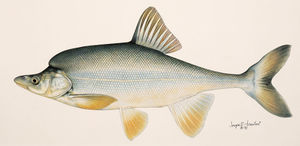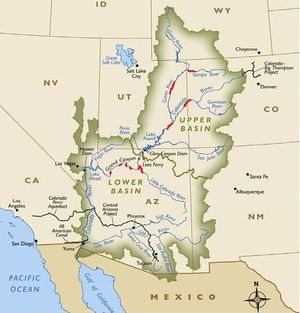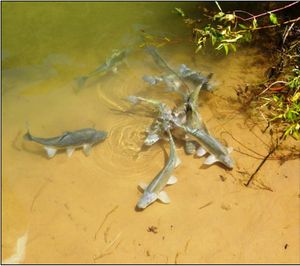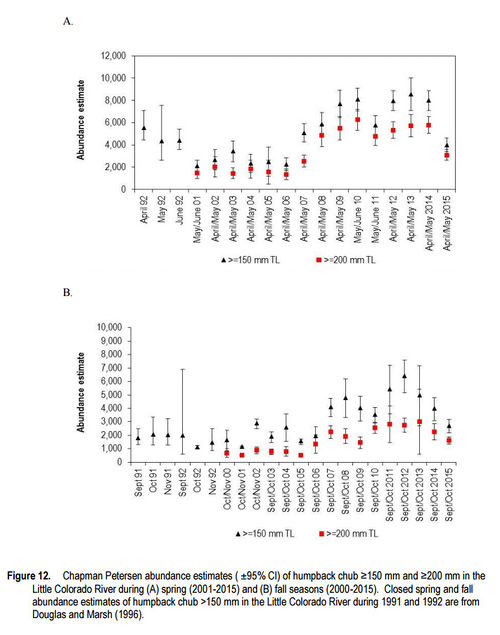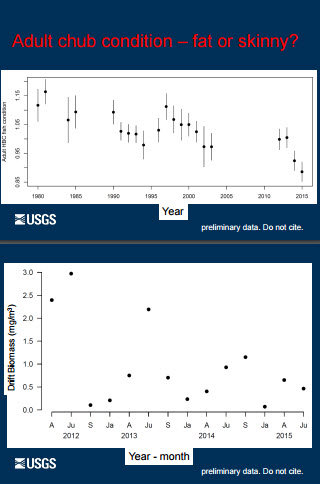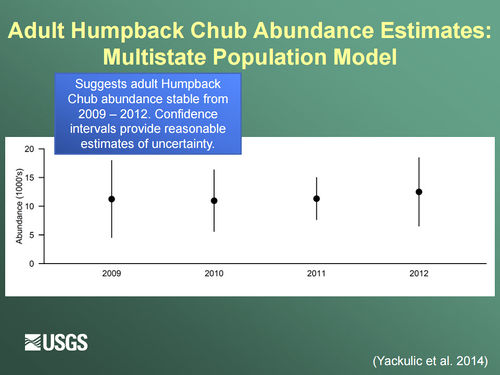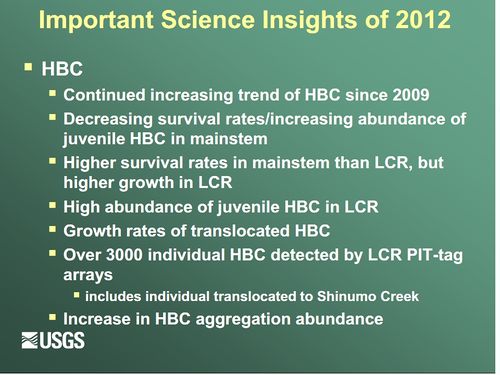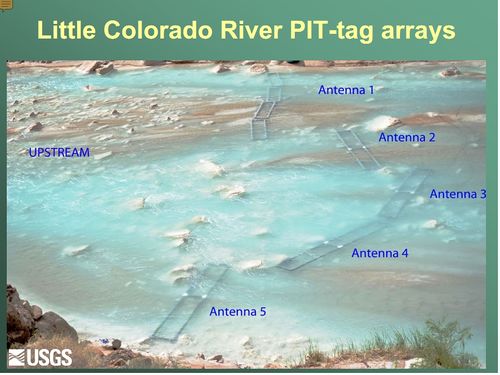Difference between revisions of "Humpback Chub Page"
Cellsworth (Talk | contribs) |
Cellsworth (Talk | contribs) |
||
| Line 15: | Line 15: | ||
[[Image:Humpback-large- PIC.jpg|thumb|left|300px]] | [[Image:Humpback-large- PIC.jpg|thumb|left|300px]] | ||
| − | |||
| − | |||
[[File:HBC distribution USFWS.jpg |300px]] | [[File:HBC distribution USFWS.jpg |300px]] | ||
| + | |||
| + | [[File:HBC-Kurt- PIC.jpg|300px]] | ||
</p> | </p> | ||
Revision as of 11:52, 28 July 2016
|
Description The humpback chub is a relatively small fish by most standards – its maximum size is about 20 inches and 2.5 pounds. By minnow standards it is a big fish, though not like the giant of all minnows – the Colorado pikeminnow. Humpback chub can survive more than 30 years in the wild. It can spawn as young as 2 to 3 years of age during its March through July spawning season. Although the humpback chub does not have the swimming speed or strength of the Colorado pikeminnow, its body is uniquely formed to help it survive in its whitewater habitat. The hump that gives this fish its name acts as a stabilizer and a hydrodynamic foil that helps it maintain position and also probably helped it escape predation by making it difficult to be swallowed by all but the largest pikeminnow. The humpback chub uses its large fins to “glide” in eddy complexes, feeding on insects that become trapped in pockets of slow-moving water.
Today, five self-sustaining populations of humpback chub occur in the Upper Colorado River Basin. Two to three thousand adults can occur in the Black Rocks and Westwater Canyon core population in the Colorado River near the Colorado/Utah border. Several hundred to more than 1,000 adults may occur in the Desolation/Gray Canyon core population in the Green River. Populations in Yampa and Cataract canyons are small, each consisting of up to a few hundred adults. The largest population of humpback chub is found in the Grand Canyon -- primarily in the Little Colorado River (LCR) and its confluence with the main stem Colorado River. In 2009, the U.S. Geological Survey announced that this population increased by about 50 percent from 2001 to 2008 to between 6,000 and 10,000 adults. One of the primary threats to humpback chub has been the proliferation of warm-water nonnative fish predators like smallmouth bass and northern pike. |
| --- | Fish Species of the Colorado River in Lower Glen Canyon and Grand Canyon | --- |
|---|
